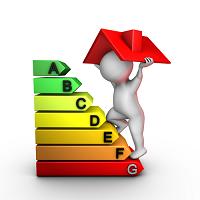
These highly efficient furnaces have an AFUE rating of at least 98 percent. By comparison, furnaces older than 10 years often have an AFUE of up to 65 percent, which means that only 65 percent of the fuel consumed by the unit is converted to heat for your home. The remaining 35 percent is vented as exhaust.
A condensing furnace has several unique components that contribute to its highly efficient operation.
- Variable-speed blower - Conventional furnaces have two speeds: on and off. A condensing furnace features a blower that modulates to meet the real-time heating needs of your home. On milder days, the blower slows, heating your home more efficiently with less electricity. The blower motor on a conventional furnace is a split-capacitor type, which uses enough electricity to power a refrigerator. The electronically commutated motor (ECM) on a condensing furnace uses 75 percent less electricity and runs at a slower but more continuous speed, offering excellent air filtration and heat distribution for your home.
- Modulating gas valve - The gas valve on a condensing furnace regulates the flow of fuel from 40 percent to 100 percent capacity, helping conserve fuel and lowering the unit's carbon footprint considerably. On warmer days, less fuel is used to heat your home, translating to lower energy costs.
- Secondary heat exchanger - A conventional furnace has one heat exchanger. As it heats your air, the resulting exhaust gases are vented outside. The condensing furnace features a secondary heat exchanger that recovers the exhaust from the primary heat exchanger and uses it to heat more air for your home. This results in a much more efficient system that makes the most of your energy dollars.
For more expert advice about condensing furnaces, please feel free to contact us at Rodenhiser Plumbing, Heating & Air Conditioning. We serve the Route 495/128 area with an unsurpassed dedication to professionalism and excellent customer service.
Our goal is to help educate our customers about energy and home comfort issues (specific to HVAC systems). For more information about furnaces and other HVAC topics, download our free Home Comfort Solutions Guide.
Image via Shutterstock.com